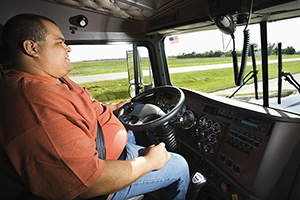Senior Reporter
FMCSA Issues Final Entry-Level Driver Training Rule

The Federal Motor Carrier Safety Administration’s final rule requires that behind-the-wheel proficiency of an entry-level truck and bus driver be determined solely by the instructor’s evaluation of how well the driver-trainee performs the fundamental vehicle control skills and driving procedures set forth in the curricula.
The 281-page entry-level driver training rule, largely the result of recommendations sent to the agency by a committee of industry stakeholders, revises the standards required for new interstate and intrastate commercial vehicle operators to obtain a Class A and Class B commercial driver license.
The rule, which carries a compliance date of Feb. 7, 2020, also sets no minimum number of hours of classroom instruction.
“However, training providers must provide instruction in all elements of the applicable theory curriculum, and driver-trainees must receive an overall score of at least 80% on the theory assessment,” according to the rule.
The behind-the-wheel curricula for the Class A and Class B CDL, composed of range and public road segments, include discrete maneuvers that each driver-trainee must proficiently demonstrate to the satisfaction of the training instructor. The rule dictates that the training provider must not issue the training certificate unless the driver-trainee demonstrates proficiency in performing all required behind-the-wheel skills.
The agency said the rulemaking would enhance the safety of commercial motor vehicle operations on the nation’s highways by establishing “a more extensive entry-level driver training protocol and by increasing the number of drivers who receive the training.”
Attempts by trucking regulators to impose a prescribed course of training for novice drivers date to 1985, when the Federal Highway Administration’s Office of Motor Carriers, the predecessor to FMCSA, published a “Model Curriculum for Training Tractor-Trailer Drivers.”
Several attempts since then have been rejected either because of a lack of industry support or inadequate regulatory justifications that a rule’s benefits would outweigh its costs.
The basic provisions in the rule, mandated by the MAP-21 transportation law, are largely the result of a series of meetings between February 2015 and May 2015 of an FMCSA-appointed broad-based stakeholder group known as the Entry-Level Driver Training Advisory Committee.
The 25-member committee issued its consensus agreement May 29, 2015.
The final rule said the issue of a "performance-based" approach to behind-the-wheel training versus an approach requiring that a minimum number of hours be spent in the hands-on training was the most thoroughly debated issue within the committee, FMCSA said.
“ATA has consistently advocated that skills, not simply time spent in a classroom or behind the wheel, should be the deciding factor if a student should be allowed to take a commercial driver’s license test,” said American Trucking Associations Executive Vice President of Advocacy Bill Sullivan. “Today’s rule is a victory for common sense and for safety.”

